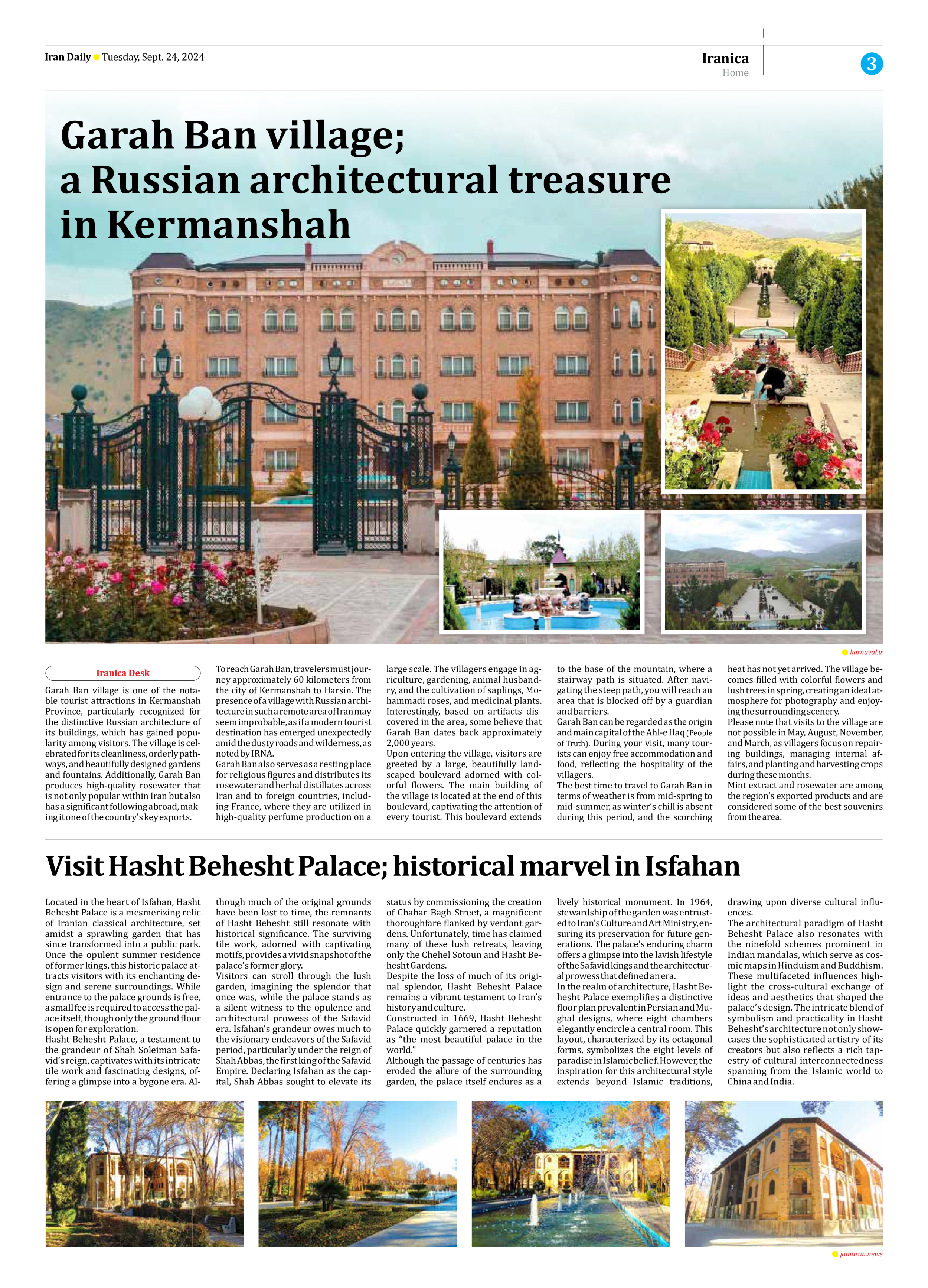
Copy in clipboard...
Visit Hasht Behesht Palace; historical marvel in Isfahan
Hasht Behesht Palace, a testament to the grandeur of Shah Soleiman Safavid’s reign, captivates with its intricate tile work and fascinating designs, offering a glimpse into a bygone era. Although much of the original grounds have been lost to time, the remnants of Hasht Behesht still resonate with historical significance. The surviving tile work, adorned with captivating motifs, provides a vivid snapshot of the palace’s former glory.
Visitors can stroll through the lush garden, imagining the splendor that once was, while the palace stands as a silent witness to the opulence and architectural prowess of the Safavid era. Isfahan’s grandeur owes much to the visionary endeavors of the Safavid period, particularly under the reign of Shah Abbas, the first king of the Safavid Empire. Declaring Isfahan as the capital, Shah Abbas sought to elevate its status by commissioning the creation of Chahar Bagh Street, a magnificent thoroughfare flanked by verdant gardens. Unfortunately, time has claimed many of these lush retreats, leaving only the Chehel Sotoun and Hasht Behesht Gardens.
Despite the loss of much of its original splendor, Hasht Behesht Palace remains a vibrant testament to Iran’s history and culture.
Constructed in 1669, Hasht Behesht Palace quickly garnered a reputation as “the most beautiful palace in the world.”
Although the passage of centuries has eroded the allure of the surrounding garden, the palace itself endures as a lively historical monument. In 1964, stewardship of the garden was entrusted to Iran’s Culture and Art Ministry, ensuring its preservation for future generations. The palace’s enduring charm offers a glimpse into the lavish lifestyle of the Safavid kings and the architectural prowess that defined an era.
In the realm of architecture, Hasht Behesht Palace exemplifies a distinctive floor plan prevalent in Persian and Mughal designs, where eight chambers elegantly encircle a central room. This layout, characterized by its octagonal forms, symbolizes the eight levels of paradise in Islamic belief. However, the inspiration for this architectural style extends beyond Islamic traditions, drawing upon diverse cultural influences.
The architectural paradigm of Hasht Behesht Palace also resonates with the ninefold schemes prominent in Indian mandalas, which serve as cosmic maps in Hinduism and Buddhism. These multifaceted influences highlight the cross-cultural exchange of ideas and aesthetics that shaped the palace’s design. The intricate blend of symbolism and practicality in Hasht Behesht’s architecture not only showcases the sophisticated artistry of its creators but also reflects a rich tapestry of cultural interconnectedness spanning from the Islamic world to China and India.







